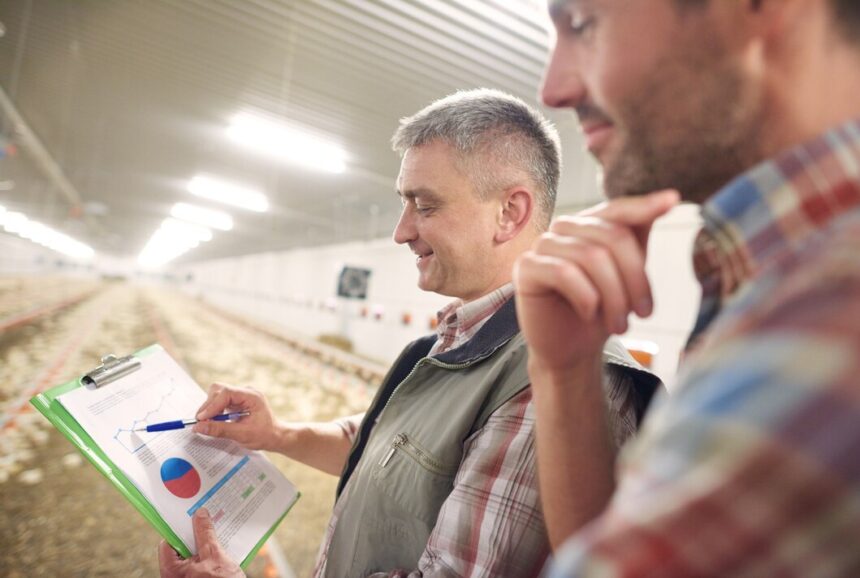Running a successful farm in South Africa requires not only hard work and knowledge of agriculture but also solid financial planning. Building and maintaining a comprehensive farm budget is crucial to manage expenses, increase profitability, and ensure long-term sustainability. Here’s a guide to help South African farmers create an effective farm budget.
1. Understand the Importance of Budgeting
A farm budget is more than just a list of expenses and income; it’s a financial roadmap that helps you plan and make informed decisions. By creating a detailed budget, you can:
- Track and control costs.
- Identify areas for cost-cutting or increased investment.
- Plan for unexpected expenses.
- Monitor financial progress throughout the year.
Tip: Regularly updating your budget as situations change can keep your farm financially sound and flexible.
2. Start with a Baseline Budget
To create an initial budget, analyze your farm’s financial performance over the past few years. Gather data on:
- Revenue Sources: Crop sales, livestock, dairy production, government grants, etc.
- Expenses: Seeds, fertilizers, equipment maintenance, labor, utilities, and marketing.
- Fixed Costs: Loan repayments, insurance premiums, land rental fees.
- Variable Costs: Costs that fluctuate, such as fuel, feed, and seasonal labor.
Tip: If you’re just starting out and lack historical data, look for industry benchmarks and consult agricultural advisors to create realistic estimates.
3. Include All Revenue Streams
Ensure your budget accounts for all potential sources of income. This can include:
- Primary Farm Operations: Sales of crops, livestock, and dairy products.
- Secondary Activities: Agri-tourism, farm stays, or workshops.
- Grants and Subsidies: Government programs that support farming activities.
Tip: Diversifying income streams can provide a cushion against low yields or market fluctuations.
4. Detail Your Expenses
Create a detailed list of both fixed and variable expenses. Fixed expenses might include loan repayments and equipment leases, while variable expenses could cover fuel and seeds. Don’t overlook:
- Labor Costs: Permanent staff salaries and wages for seasonal workers.
- Machinery Costs: Repairs, fuel, and spare parts.
- Farm Inputs: Fertilizers, pesticides, and feed.
- Utilities: Electricity and water bills.
Tip: Break down larger expenses into subcategories to get a clearer picture of where your money is going.
5. Set Financial Goals
Your budget should include both short-term and long-term financial goals. These could involve:
- Increasing profit margins by a set percentage.
- Reducing operational costs without compromising quality.
- Investing in new equipment or technology to boost productivity.
Tip: Align your financial goals with your farming strategy and adjust them annually based on previous achievements and challenges.
6. Plan for the Unexpected
Farming comes with inherent risks, from droughts to market price fluctuations. Allocate a portion of your budget as a contingency fund to cover unexpected expenses. Having a safety net can prevent financial strain during difficult times and help you avoid taking on emergency loans.
Tip: Aim to set aside at least 5-10% of your projected expenses for unforeseen costs.
7. Monitor Cash Flow
Cash flow management is vital to ensure that your farm remains operational throughout the year. During peak spending times, such as planting or harvesting seasons, expenses can surpass income, making cash flow management essential. Monitor:
- Cash Inflows: Timing of revenue from crop or livestock sales.
- Cash Outflows: Expenses that coincide with key farming periods.
Tip: Use software tools designed for agricultural budgeting to track cash flow in real-time and alert you to potential shortfalls.
8. Use Budgeting Tools and Resources
There are many budgeting tools and apps available that cater specifically to agriculture. These can help with everything from data entry to financial projections. Examples include:
- Farm management software: Tools that integrate financial data with farm production statistics.
- Spreadsheets: Customizable for tracking detailed income and expense categories.
Tip: Choose tools that can be updated frequently and allow for scenario planning.
9. Review and Adjust Periodically
A budget is not static; it should evolve based on actual results and changing conditions. Schedule regular reviews (monthly or quarterly) to:
- Compare budgeted figures to actual results.
- Identify discrepancies and understand their causes.
- Adjust the budget to better reflect current market trends or operational changes.
Tip: Regular reviews allow for proactive management rather than reactive adjustments when problems arise.
Building and maintaining a farm budget is an essential practice for farmers in South Africa looking to remain competitive and profitable. By understanding all income and expenses, setting clear goals, and being prepared for unexpected challenges, you can ensure that your farm thrives. A well-planned budget provides the framework needed to manage financial health and supports sustainable growth in the ever-changing agricultural landscape.








